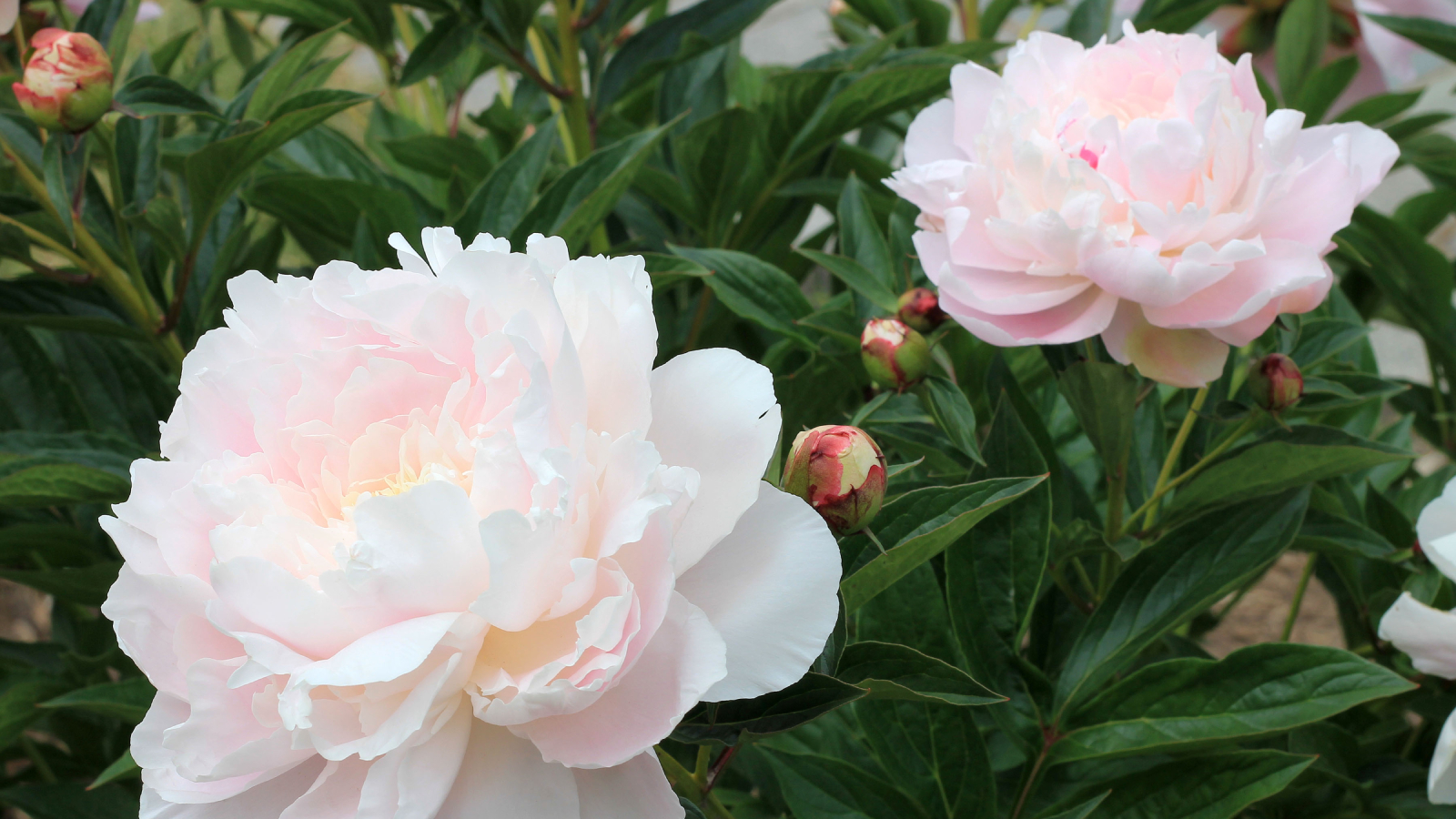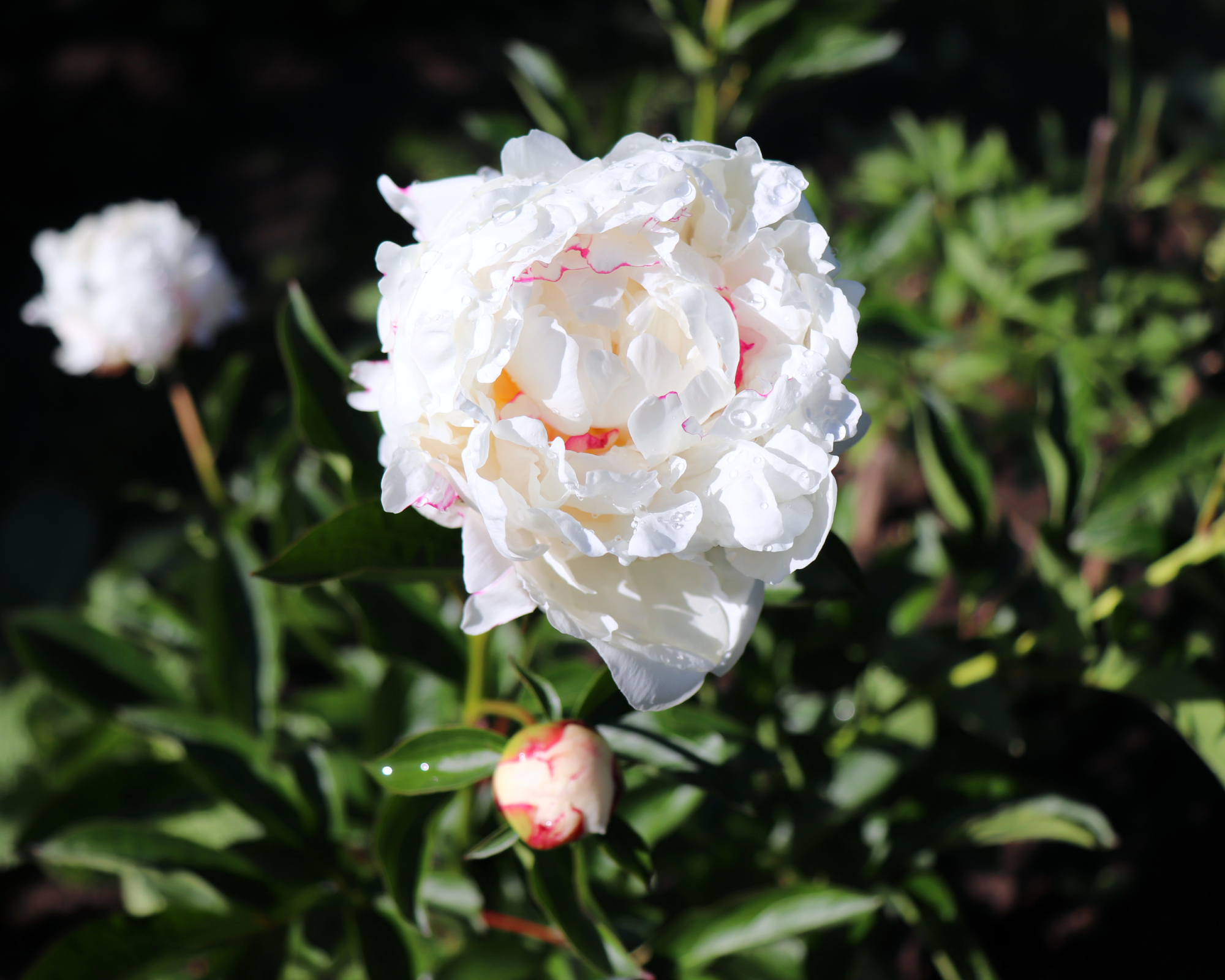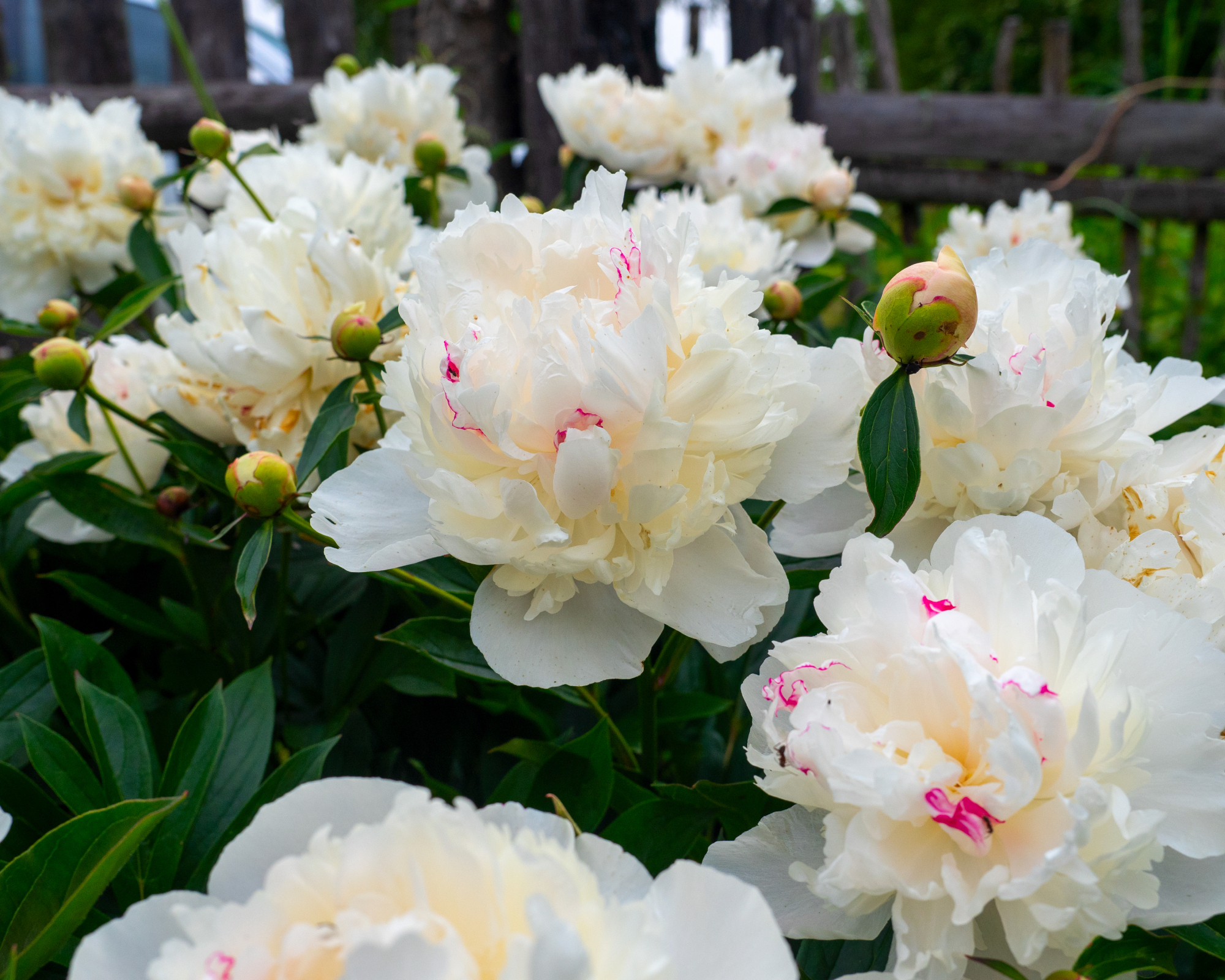How To Grow A Shirley Temple Peony – For A Touch Of Sweetness In Your Spring Garden
'Shirley Temple' peonies add delicate refinement to any yard. Their beautiful double blooms and gradually changing color are sure to charm.


Laura Walters
Quick Facts
Botanical name: Paeonia lactiflora ‘Shirley Temple’
Height: Up to 3 ft. (90cm) tall
Spread: Up to 3 ft. (90cm) wide.
Sun exposure: Full sun
Soil requirements: Organically rich, well-drained soil with a neutral pH
Hardiness zones: USDA zones 4-8
When to plant: Early fall is best, but spring is an acceptable alternative
If the word “lovely” were a flower, it would likely be a ‘Shirley Temple’ peony. These landscape favorites have huge white blossoms, washed lightly in rose, and looking both innocent and luxurious at the same time. This spring-bloomer sits on lush, clumping foliage yet is among the easiest plants to grow.
Are you ready for ‘Shirley Temple’ double peony plants to light up your spring? Read on for all you need to know.
‘Shirley Temple’ Peony Care
'Shirley Temple' peonies have a beautiful soft blush color that turns white as the bloom ages and are a romantic addition to any garden. Their light fragrance is also sure to please. Care is similar to that of other types of peonies.

These pruning shears are perfect for trimming plants and cutting peony blossoms for an indoor floral display. Find in the Gardening Know How Shop.
Light
‘Shirley Temple’ peonies require ample sun. Full sun is best but partial sun can be sufficient if that is all your garden allows.
Water
The ‘Shirley Temple’ peony plant needs regular water. During the first growing season, peony plants should be watered deeply a couple times a week to ensure they thrive in their new home. However, do not let soil become waterlogged or they could develop rot.
Temperature & Humidity

This peony grows best in USDA zones 4-8. They need a cold period to induce dormancy, and do best in environments that are not too hot or humid.
Soil
Well-draining soil is required. Be sure there is lots of organic material in the soil. The soil should be neutral in terms of pH.
Sign up for the Gardening Know How newsletter today and receive a free copy of our e-book "How to Grow Delicious Tomatoes".
Fertilizer
Peonies don’t need fertilizer if the soil contains sufficient nutrients. If the soil lacks nutrients, apply a bulb fertilizer twice during the growing season, once after flowering, again in late summer.
Problems, Pests & Diseases
Common peony diseases include fungal diseases that infect peonies, including the peony cultivar ‘Shirley Temple’. This usually occurs with wet, cool weather, particularly in spring. If you see blackened or wilted foliage on your plant’s leaves or stems, remove the diseased foliage and dispose of it to prevent disease from spreading.
As fall rolls round, cut back the plant stems to a few inches and toss out the rest in the garbage. Spraying a fungicide every week during the first month of the growing season may be necessary. On the other hand, if your plants collapse and feel mushy, it’s too late to help. Remove them entirely and dispose of them.
Powdery mildew is a fungus that attacks peonies in hot, humid weather. Look for a white coating on the leaves. Mildew only damages the plant’s appearance however, it won’t hurt the peony.
You won’t have to fight off many insect pests on ‘Shirley Temple’ peonies since they rarely have serious pest problems. Ants may frequent the blossoms but they aren’t dangerous; they are coming for the nectar in the flowers. Any other insects can be treated with neem oil except for foliar nematodes on peonies.
Pruning

Aside from cutting the plants back in fall, the only peony pruning necessary is deadheading. Cut off the flower heads as they fade. The plants look nicer without the wilted blooms and the practice discourages fungal diseases.
Propagation
Propagate ‘Shirley Temple’ by dividing the peonies. In fall, after cutting the stalks back to a few inches above the ground, dig up the plants. Use a sharp garden knife to cut each root ball into sections. Be sure each one has at least three growth eyes at the top. Replant these sections with the eyes close to the surface of the soil.
Frequently Asked Questions
How big do ‘Shirley Temple’ peonies get?
When fully mature, ‘Shirley Temple’ peonies grow to 3 feet (90 cm) tall and wide.
Do ‘Shirley Temple’ peonies need staking?
If you have large peony flowers – like ‘Shirley Temple’ double peonies - the flower heads are going to be heavy and will need help to stand straight, especially in rain. You can use stakes and twine to create a support, or else buy special peony rings.
This article features products available from third-party vendors in the Gardening Know How Shop.

Teo Spengler is a master gardener and a docent at the San Francisco Botanical Garden, where she hosts public tours. She has studied horticulture and written about nature, trees, plants, and gardening for more than two decades, following a career as an attorney and legal writer. Her extended family includes some 30 houseplants and hundreds of outdoor plants, including 250 trees, which are her main passion. Spengler currently splits her life between San Francisco and the French Basque Country, though she was raised in Alaska, giving her experience of gardening in a range of climates.
- Laura WaltersContent Editor